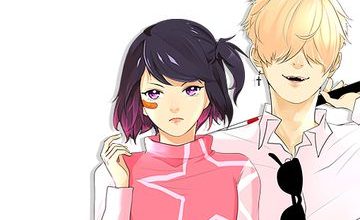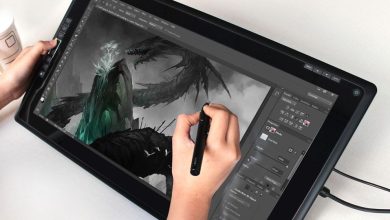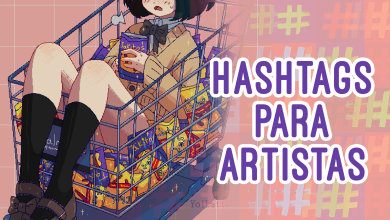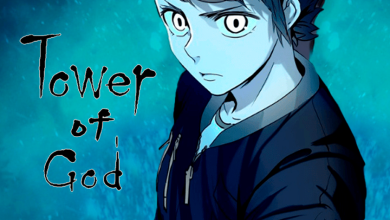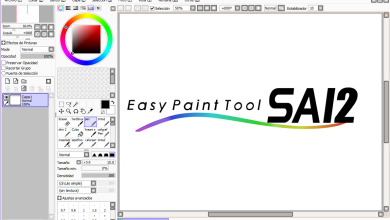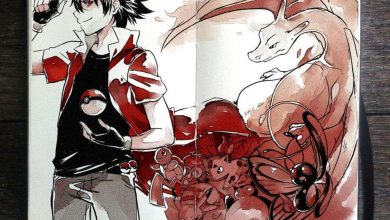Human Anatomy in Drawing
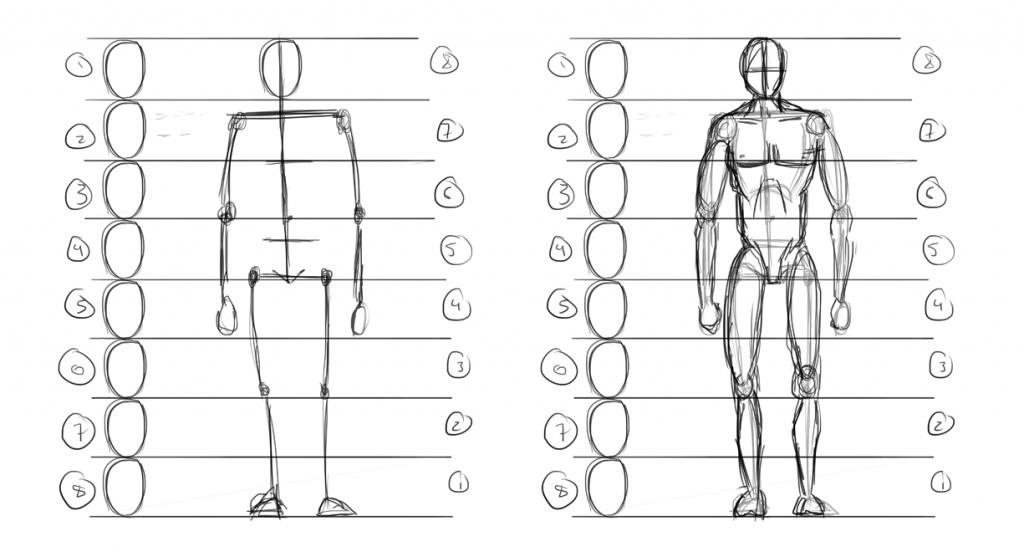
One of the first things we draw in life are people. Many of us started drawing the typical stick figures as children. Over time, we feel like drawing Chinese monkeys with colorful hair, or heroes with 30 kilos of muscles.
The thing is that the human figure is more complex than it seems. Because of this, we tend to get frustrated when drawing it, mainly when trying to create our own characters. So, what is the secret to drawing beautiful bodies?
First of all, it is important to learn the human anatomy well, because this knowledge will help you basically draw the pose, action or body type that you want. As was said in the article about the importance of drawing basicsIf you don’t have a good foundation of how the human structure works in art, your drawings and your artistic progress will be affected and drastically limited.
But, on the contrary, if you have a good understanding of what the basic rules of anatomy are like, it will be much easier to break them later with other drawing styles that go beyond realism. But I’m getting ahead of myself.
The human anatomy and the magic of proportion
Before we start, there is a little magic word that we have to keep in mind whenever we draw the human anatomy, which is the proportion. In drawing, she refers to the size of one thing in relation to the others, and it is she who gives us the power to draw any type of body that we want, as long as we know how to use it.
In general, the adult human body usually has the size equivalent to eight heads. This means that the body of an adult person will be eight times the size of their head, which can be interpreted as the places where the body will have imaginary divisions: the chin and the nape; chest and armpit; the elbow and navel; the wrist and the pubis; the gap between the legs; the knees; the gap between the calves; And feet.
Knowing these divisions will help you to know the proportions of the body, how to draw it in other positions, among other advantages. For example, if you want to make a neko girl with her arms raised like little legs, you’ll know that her elbows should be positioned a little below where her ribs should end.
However, the measurement of the eight heads will change when we draw children or people of unconventional size or body types. Likewise, it is important to know the proportions of the human anatomy and to know how to use them to draw coherent figures.
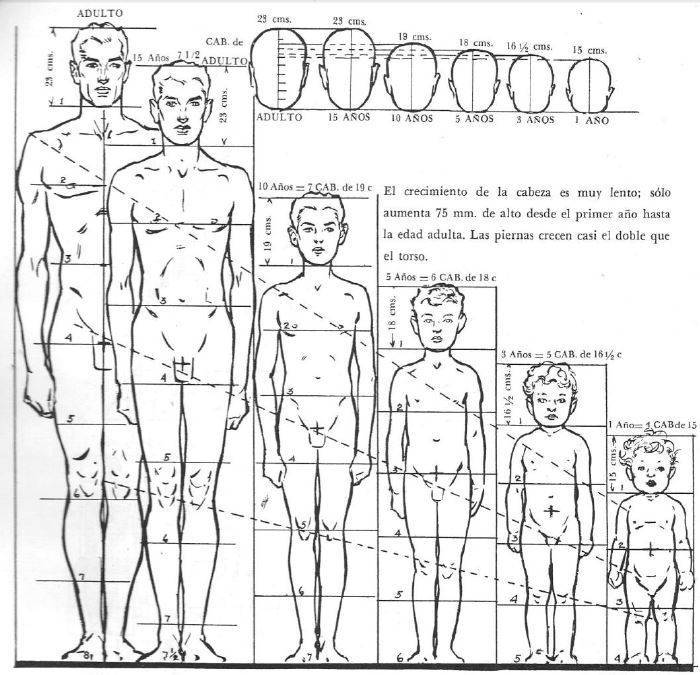
Shapes, shapes and more shapes!
Although there are general rules, it is essential to understand that each human body has a different structure, and to draw different body formats, it is important to have a good understanding of how geometric shapes work, because the human figure is basically the union of several of them.
We can take as an example an arm, which can be skinnier or chubbier, more or less muscular, depending on the ways in which it is drawn. If you are interested in this topic or want to refresh your memory a bit about it, we already did a article on primary forms and how to use them in the structure of a drawing.
Shapes are extremely important for drawing different types of bodies, and should be studied whenever possible. Knowing how to draw a three-dimensional cone or rectangle will be the key to making a good sketch and, consequently, drawing a good pose. In addition, knowing how to work with shapes well will help you design more attractive, striking and interesting characters.
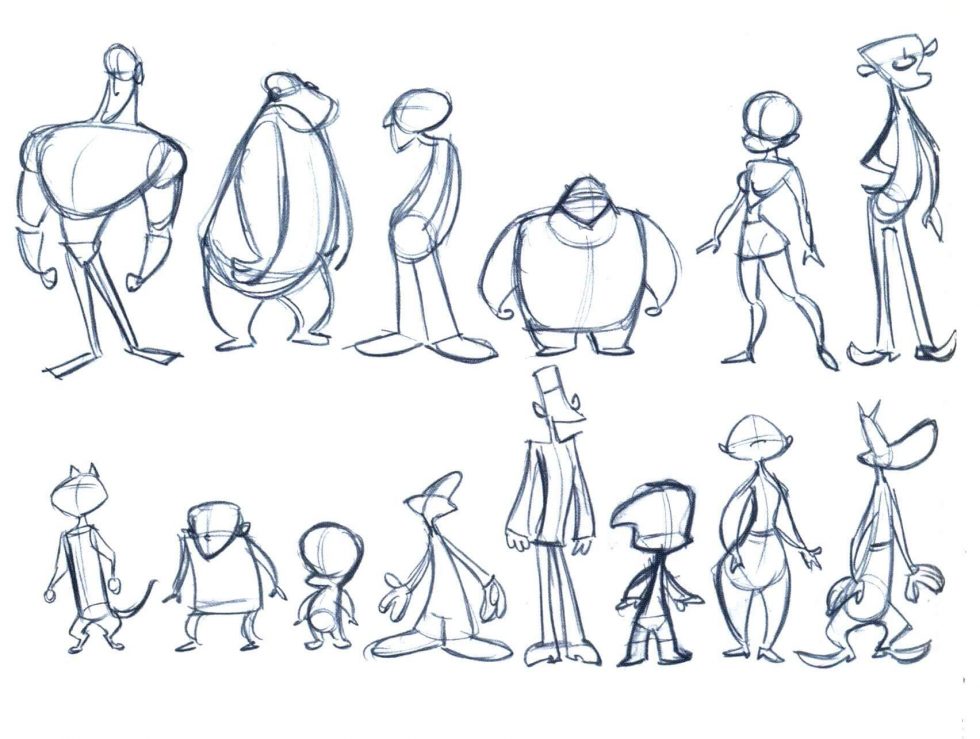
Hang on a minute. There’s something weird about these sketches in the last image. Where is the rule of 8 heads? Some of them have short legs and a giant torso! I don’t understand anything anymore. If this is what you are thinking now, don’t worry, I am here to clarify these possible doubts!
Character Design – Exaggeration and Contrast
Do you remember the magic word “proportion”? In character design, she gains additional meaning as a tool that can add visual importance, visual interest, and variation.
Exaggeration and contrast are part of certain drawing styles, such as cartoons, but note that even though some of these figures have larger body parts than others, their overall shape is harmonious. This is because the models of their bodies continue to be proportional, even if they are surreal, that is, they will follow the same rule as before: their bodies will have the same divisions, and they will always have a number of heads corresponding to the size, age and/or physical type of the body. character.
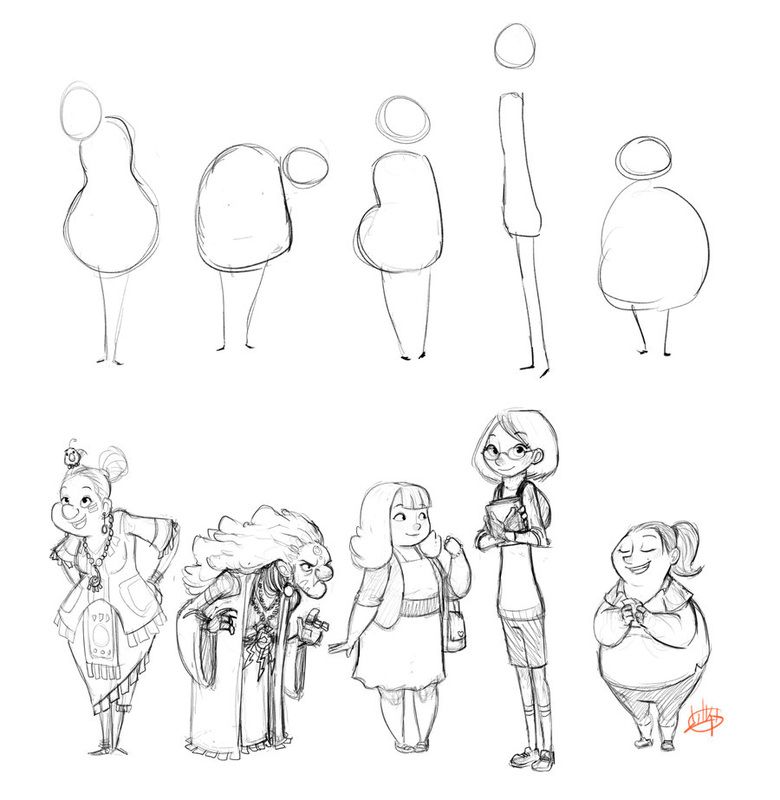
Making a part of the body smaller or larger in proportion to the rest of the body guarantees importance to this part, as well as personality and distinction. These elements help tell the story visually, and when used in conjunction with a good script, they are worth gold.
In this way, if you are interested in learning about writing as well as drawing, perhaps to write a comic in Webtoon or an illustrated book, you can also read the series of articles we have on the incredible art of writing by doing click here!
If you liked this article, and you want to know more about how to create well-structured characters with personality, perhaps this Domestika introductory character design course is of interest to you, you can see it by doing click here. Don’t forget that we have a 10% discount quota which you can use in any course on the platform: CHIBERIANOS-WAIFUS. Lastly, if you are interested in reading the latest article in the Chibi Sketch series on Gestalt laws, click here! click here! 🙂


